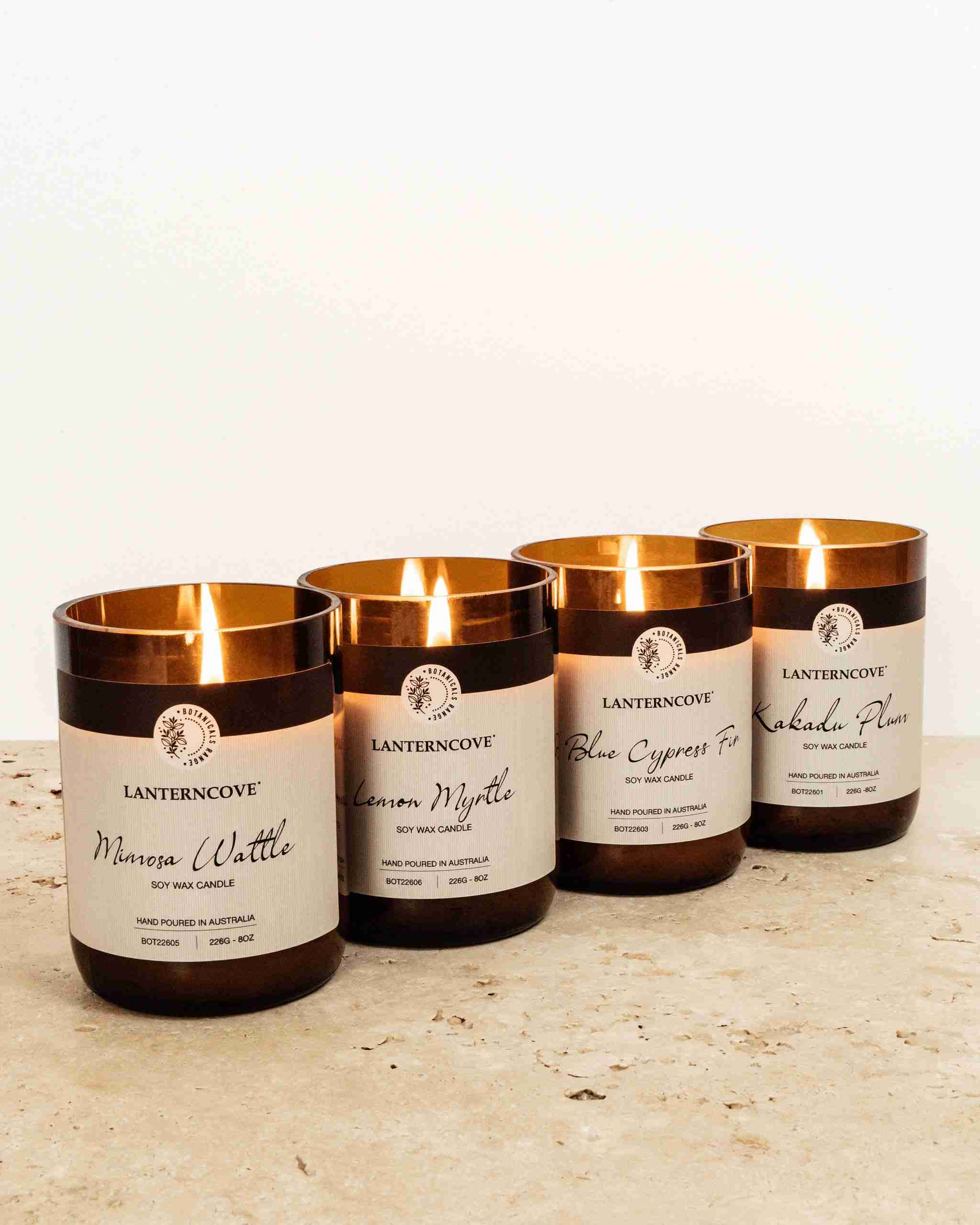Boost Your Living Area with Lavish Soy Candles and Home Fragrance
Boost Your Living Area with Lavish Soy Candles and Home Fragrance
Blog Article
From Wick to Wax: Recognizing the Chemistry Behind Soy Wax Candles and Their Environmental Impact
As we brighten our spaces with the warm radiance of candle lights, there lies a realm of elaborate chemistry behind the relatively simple act of lighting a soy wax candle light. The choice between soy and paraffin wax expands beyond mere appearances, diving into the world of environmental impact and the very composition of the products. Comprehending the molecular framework of soy wax and its combustion procedure clarifies the exhausts released into our surroundings. Join us as we unravel the clinical ins and outs behind soy wax candles and discover their effects on our environment.
Soy Wax Vs. Paraffin Wax
When comparing soy wax and paraffin wax for candle light production, it is important to recognize the distinctive characteristics and advantages of each material. Soy wax is an all-natural, renewable energy stemmed from soybean oil, making it environment-friendly and eco-friendly - crystal soy candles. On the other hand, paraffin wax is a by-product of petroleum refining, which raises worries regarding its environmental influence and sustainability
Soy wax candles burn cleaner and emit much less residue compared to paraffin wax candles, making them a healthier selection for interior air quality. Furthermore, soy wax has a lower melting point, permitting a longer-lasting candle light that distributes scent better. Paraffin wax, on the various other hand, has a tendency to burn faster and less cleanly, possibly launching damaging chemicals into the air.
From a sustainability viewpoint, soy wax is preferred for its biodegradability and sustainable sourcing, lining up with the expanding consumer choice for eco aware products. While paraffin wax has actually been a standard selection in candle making as a result of its price and simplicity of usage, the change in the direction of environmentally friendly choices like soy wax is getting energy in the industry.
Chemical Make-up of Soy Wax

Burning Process in Soy Candles
The chemical make-up of soy wax straight influences the combustion process in soy candles, influencing factors such as burn time, fragrance launch, and ecological influence. When a soy candle light is lit, the warm from the flame thaws the wax near the wick.
The burning performance of soy candle lights is influenced by the pureness of the soy wax and the top quality of the wick. A clean-burning soy candle with an appropriately sized wick will produce a stable fire and reduce residue development. This not only expands the burn time of the candle light yet also boosts the launch of fragrances. Furthermore, soy wax candles have a lower environmental impact contrasted to paraffin candles because of their renewable and eco-friendly nature.

Environmental Benefits of Soy Wax

Considered a lasting alternative to traditional paraffin wax, soy wax supplies remarkable environmental advantages that make it a preferred option among eco-conscious consumers. review Soy wax burns cleaner and produces much less soot than paraffin wax, adding to much better interior air quality and minimizing the requirement for cleansing and upkeep. Generally, the environmental advantages of soy wax straighten with the growing demand for environment-friendly and sustainable items in the market.
Recycling and Disposal Considerations
Reusing and proper disposal of soy wax candle lights play a vital duty in preserving environmental sustainability and minimizing waste in houses and neighborhoods. When it comes to recycling soy wax candles, the very first action is to make certain that the candle light has burned entirely.

In regards to disposal, if recycling is not an alternative, soy wax candles are biodegradable and can be securely taken care of in the majority of home waste systems. It is constantly recommended to inspect with local recycling centers or waste management services for details standards on candle light disposal to guarantee proper handling and ecological defense.
Final Thought
In final thought, the chemistry behind soy wax candles reveals their environmental advantages over paraffin wax candles. Soy wax, obtained from soybean oil, burns cleaner and creates much less redirected here soot when compared to paraffin wax.
When contrasting soy wax and paraffin wax for candle light production, it is necessary to understand the distinct characteristics and advantages of each material (candles).Soy wax candles melt cleaner and send out less soot compared to paraffin wax candle lights, making them a healthier choice for interior air read what he said quality.Taken into consideration a lasting choice to typical paraffin wax, soy wax supplies significant ecological advantages that make it a preferred option among eco-conscious customers. Soy wax burns cleaner and produces less soot than paraffin wax, adding to better interior air quality and decreasing the demand for cleaning and maintenance.In verdict, the chemistry behind soy wax candle lights reveals their ecological advantages over paraffin wax candles
Report this page